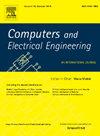Hybrid robot navigation: Integrating monocular depth estimation and visual odometry for efficient navigation on low-resource hardware
IF 4
3区 计算机科学
Q1 COMPUTER SCIENCE, HARDWARE & ARCHITECTURE
引用次数: 0
Abstract
Robotic navigation is a complex task requiring accurate localization, environmental perception, path planning, and control of actuators. Traditional navigation systems rely on pre-built maps or map building techniques such as simultaneous localization and mapping (SLAM). However, these approaches unnecessarily map the entire environment, including all objects and obstacles, making them computationally intensive and slow, particularly on resource-constrained devices. While mapless navigation methods address some of these issues they are often too impulse-based, lacking reliance on planning. Recent advances in deep learning have provided solutions to many navigation paradigms. In particular, Monocular Depth Estimation (MDE) enables the use of a single camera for depth estimation, offering a cost-effective alternative to selective mapping. While these approaches effectively address navigation challenges, they still face issues related to scalability and computational efficiency. This paper proposes a novel hybrid approach to robot navigation that combines map-building techniques from classical visual odometry (VO) with maples techniques that uses deep learning-based MDE. The system employs an object detection model to identify target locations and estimate travel distances, while the MiDaS MDE model provides relative depth to detect the nearest obstacle and navigable gaps after image segmentation removes floor and ceiling areas, enhancing the robot's perception of free spaces. Wheel odometry (WO) and VO determine the robot's position and its metric distance from detected nearest obstacle. An instantaneous Grid map is then formed with robot’s position, navigable gap, nearest obstacle and the goal location. Path planning is conducted using a modified A-star (A*) algorithm, followed by path execution with a Proportional Integral Derivative (PID) controller. The system’s performance is evaluated at both the modular level and the final system level using various metrics, such as Mean Absolute Error (MAE), Root Mean Squared Error (RMSE), and inference time for depth estimation, and navigation success rate across different robot speeds for final navigation performance. Additionally, a Friedman statistical test is conducted to validate the results. Experimental results show that the proposed approach reduces memory and computational demands, enabling real-world navigation on low-resource hardware. To our knowledge, this is the first integration of MDE-based mapless navigation with VO-based map-building, presenting a novel direction for research.
混合机器人导航:整合单目深度估算和视觉里程计,在低资源硬件上实现高效导航
机器人导航是一项复杂的任务,需要精确的定位、环境感知、路径规划和执行器的控制。传统的导航系统依赖于预先构建的地图或地图构建技术,例如同步定位和绘图(SLAM)。然而,这些方法不必要地映射整个环境,包括所有对象和障碍物,使其计算密集且速度缓慢,特别是在资源受限的设备上。虽然无地图导航方法解决了其中一些问题,但它们往往过于基于冲动,缺乏对计划的依赖。深度学习的最新进展为许多导航范例提供了解决方案。特别是,单目深度估计(MDE)可以使用单个相机进行深度估计,为选择性映射提供了一种具有成本效益的替代方案。虽然这些方法有效地解决了导航挑战,但它们仍然面临着与可扩展性和计算效率相关的问题。本文提出了一种新的机器人导航混合方法,该方法结合了经典视觉里程计(VO)的地图构建技术和使用基于深度学习的MDE的maple技术。该系统采用目标检测模型来识别目标位置并估计行进距离,而MiDaS MDE模型在图像分割去除地板和天花板区域后,提供相对深度来检测最近的障碍物和可导航的间隙,增强机器人对自由空间的感知。车轮里程测量(WO)和VO确定机器人的位置及其与检测到的最近障碍物的度量距离。然后由机器人的位置、可导航的间隙、最近的障碍物和目标位置组成一个即时网格地图。路径规划采用改进的a星(a *)算法,路径执行采用比例积分导数(PID)控制器。系统的性能在模块级和最终系统级使用各种指标进行评估,例如平均绝对误差(MAE)、均方根误差(RMSE)、深度估计的推理时间,以及不同机器人速度下的导航成功率,以获得最终导航性能。此外,弗里德曼统计检验进行验证的结果。实验结果表明,该方法减少了内存和计算需求,能够在低资源硬件上实现实际导航。据我们所知,这是首次将基于mde的无地图导航与基于vo的地图构建相结合,为研究提供了一个新的方向。
本文章由计算机程序翻译,如有差异,请以英文原文为准。
求助全文
约1分钟内获得全文
求助全文
来源期刊

Computers & Electrical Engineering
工程技术-工程:电子与电气
CiteScore
9.20
自引率
7.00%
发文量
661
审稿时长
47 days
期刊介绍:
The impact of computers has nowhere been more revolutionary than in electrical engineering. The design, analysis, and operation of electrical and electronic systems are now dominated by computers, a transformation that has been motivated by the natural ease of interface between computers and electrical systems, and the promise of spectacular improvements in speed and efficiency.
Published since 1973, Computers & Electrical Engineering provides rapid publication of topical research into the integration of computer technology and computational techniques with electrical and electronic systems. The journal publishes papers featuring novel implementations of computers and computational techniques in areas like signal and image processing, high-performance computing, parallel processing, and communications. Special attention will be paid to papers describing innovative architectures, algorithms, and software tools.
 求助内容:
求助内容: 应助结果提醒方式:
应助结果提醒方式:


